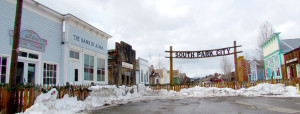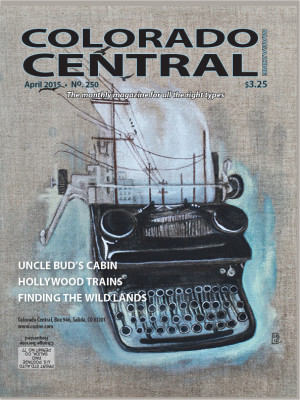By Hal Walter
Poet and conservationist Gary Snyder once said: “Nature is not a place to visit. It is home.”
For 20 years now, San Isabel Land Protection Trust has been helping people protect places they call home, and in turn helping provide a home for nature in a time of increasing strain on land resources in Southern Colorado. Over these two decades the population of Colorado has exploded, and the ripple effects of runaway growth and development on the Front Range and I-70 corridor have been felt in all corners of the state, including here in Custer, Fremont, Huerfano, and Pueblo Counties, where San Isabel serves to protect land and water resources.
For most of us, the amenities of our home geography include the land, water and views. For others – the actual landowners – these resources literally are their homes, where they have worked the land, set roots, raised families. Working to preserve and maintain these homes on both levels is the job of San Isabel.
For many of these years, Vic Barnes has served on the San Isabel board. He recalls a time when the land trust was run by volunteers in donated office space, and the number of conservation easements could be counted on one hand.
Vic says the success of San Isabel – which in two decades has grown to include 128 conservation easements protecting 40,000 acres of land, 174 water rights and 61 miles of stream frontage – is that the very values that drew people to this area are the things many people find worth preserving.
“I think a lot of the people here share the same values you get with conservation easements and an organization like San Isabel – like conservation, low-density occupation and wildlife,” Vic says. “When people come here that’s what they are after, and that’s why there is a lot of interest in conservation easements as well as outright support.”
Vic notes that financial incentives such as state tax credits also played a role in the growth of conservation easements.
One of those earliest easements – the M66 Ranch located north of Westcliffe – was helped in large part due to the tax credit afforded owners Charles and Alice Proctor, who bought their ranch in 1977 and were original San Isabel board members.
“We couldn’t really afford to do an easement until the tax benefit came along, and I think that was true for a lot of people,” Charles says. “The appraisal and legal cost were beyond reach.”
Alice passed away in 2012, but the protected 199-acre ranch will continue to be “the old home place” for Charles and their four children for some time to come, and part of a working landscape forever.
“The ranch has become the closest thing to the old home place as anything we have,” says Charles, a former anthropology professor. “We always saw this ranch as being a nonprofit ranch,” he jokes, “but it was a lovely place to live and was very important to us.”
As original board members, Charles says he and Alice were drawn to the land-trust concept because they loved the land and the people who lived close to it.
“We realized that a lot of the ranchers, who were the people we really wanted to appeal to, had very conservative attitudes,” he says. “We believed we would do better in the long run with a local organization, one made up of people they could know and trust. And I think that has worked out well in the long run.”
When John Brandenburg’s German-immigrant grandparents first homesteaded the lush meadows at the base of the Sangre de Cristo mountains south of Westcliffe, they cleared willows and beaver dams from the property to take advantage of the clear snowmelt that ran down from the mountains in the spring and summer months. To this day, John retains the attitude that water is the lifeblood of the Brandenburg Ranch.
The subject of water as it pertains to the landscape is a real hot button with John, and it’s been a key to his decision to put his ranch into a conservation easement.
“Separating the water from the land is a real sin in my opinion,” the Korean War veteran and 20-year educator says. “I’m very adamant about it – I just feel that we in the United States are so shortsighted with the use of our resources, whether it be land, timber, water or whatever, and once this water is sold off to development, it’s gone – there’s no turning back.”
John graduated from the one-room Willow School just down the road, and his grandfather was killed when a horse team ran away on the neighboring property. As a third-generation owner of the ranch where he grew up, the decision to enter an easement was a matter of preserving for future generations the place he’d known as home. His two sons will inherit the property someday, but the land will always remain undivided and with the water rights intact.
“I think my granddad would have liked the concept, and I think my mother and dad would have liked that, too,” he says.
With 20 years of success stories like this and a wide-open future, San Isabel now looks to evolve toward new goals and challenges, making the transition from cultivating conservation easements to actually stewarding those easements and maintaining a sustainable organization through memberships and contributions.
Board member Vic says the organization will tackle other projects. One example is The Bluff park that preserves the grand view of the Sangre de Cristo Range from Westcliffe, while offering a small slice of the natural world right in town. He also points to SILPT-sponsored events such as the annual Hardscrabble Mountain Trail Run and the iconic Art for the Sangres as contributions to the community and the values that many residents share and want to maintain.
For San Isabel Land Protection Trust it’s all just a new frontier in protecting and preserving this place we call home.?
Hal Walter is a 30-year resident of Custer County and the author of “Full Tilt Boogie – A journey into autism, fatherhood, and an epic test of man and beast.”



